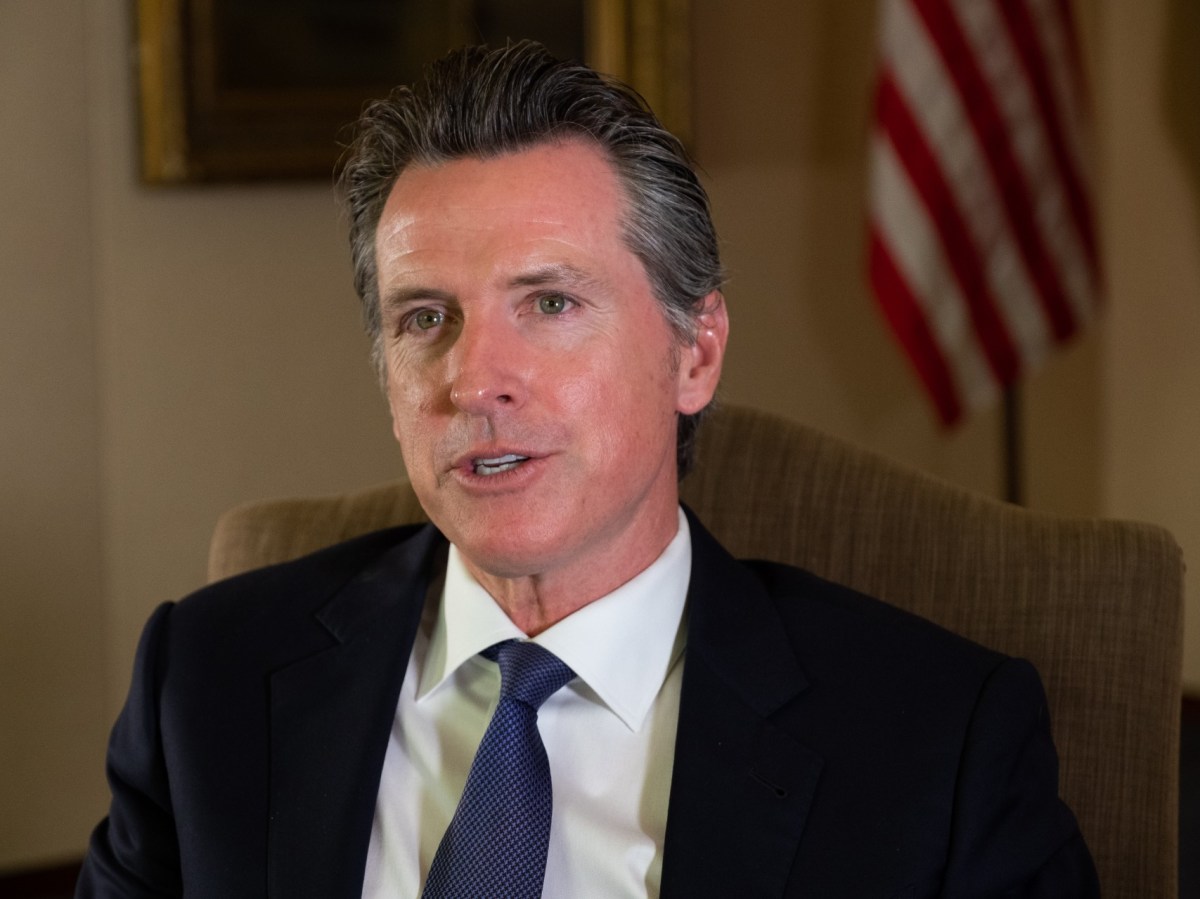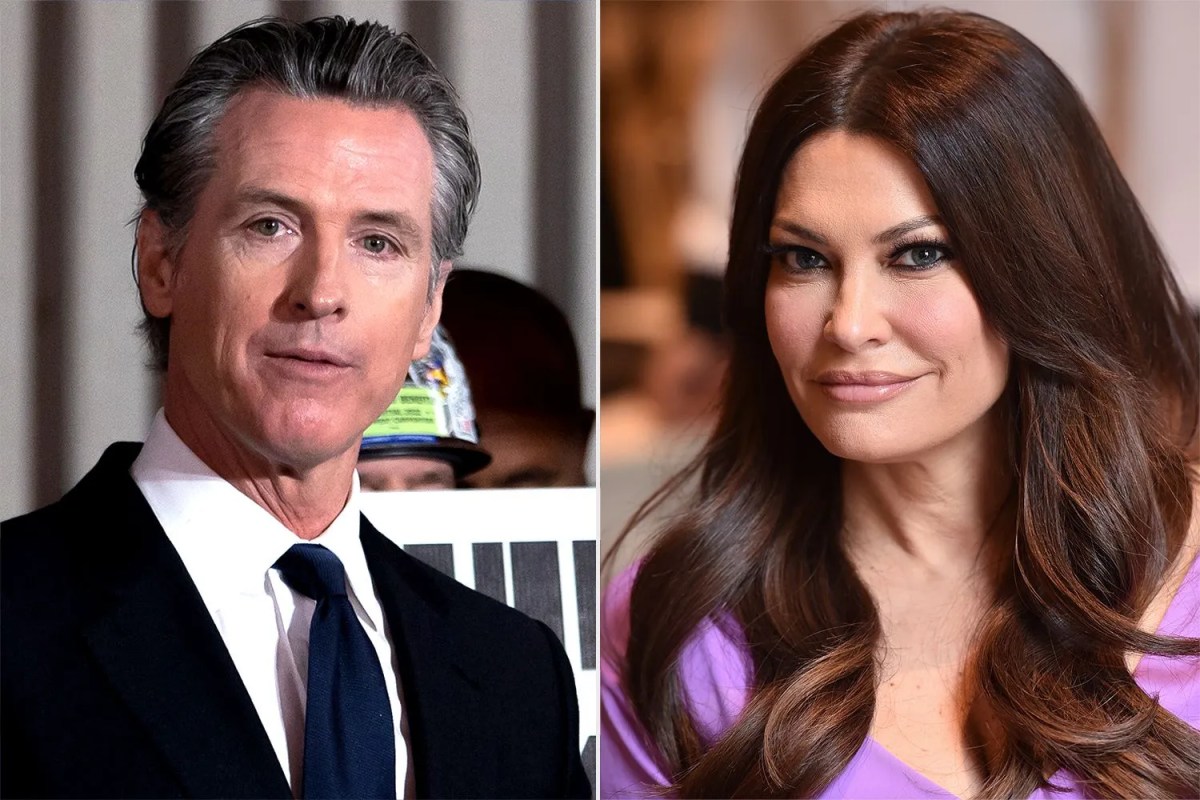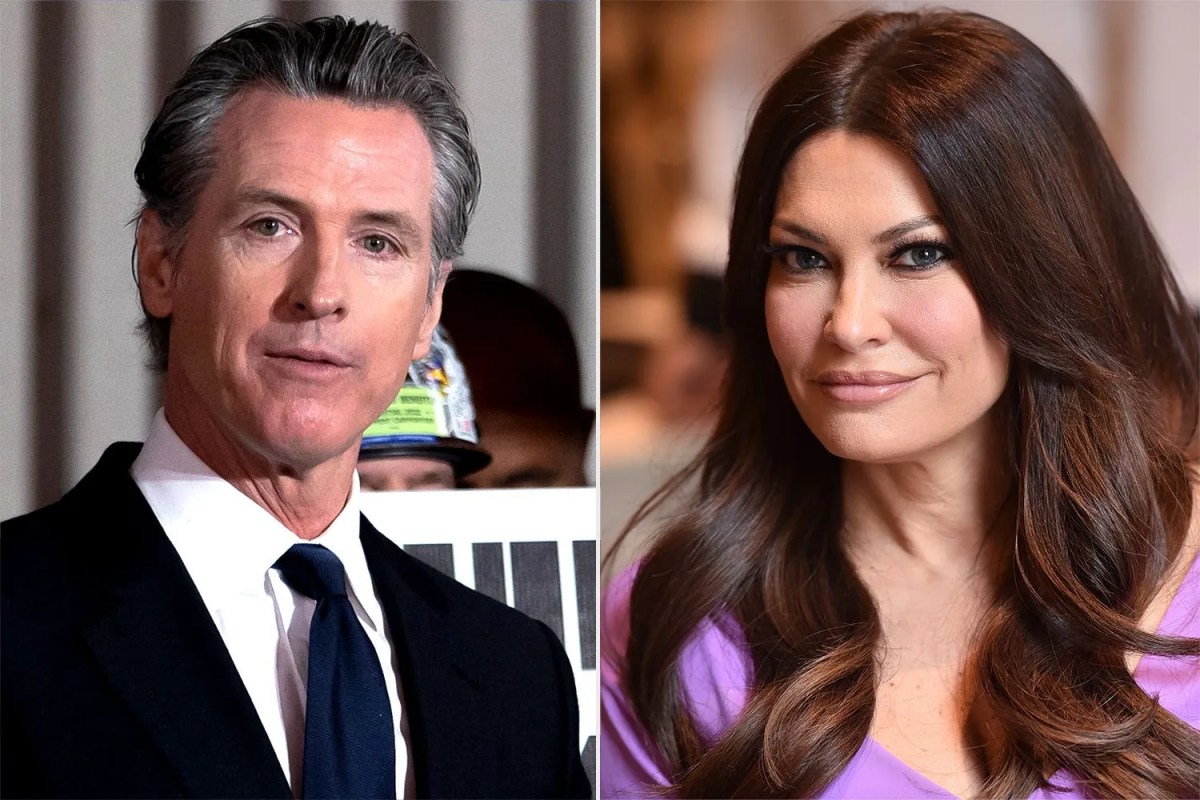Gov. Newsom responds to Trump blaming him for wildfires | CNN. The headline speaks volumes: a political clash ignited by California’s devastating wildfires. This article delves into the fiery exchange between Governor Gavin Newsom and former President Donald Trump, examining Trump’s accusations, Newsom’s counterarguments, and the underlying issues of wildfire management and climate change. We’ll dissect their rhetoric, compare their approaches to wildfire prevention, and explore the political implications of this high-stakes debate.
So, Gov. Newsom’s got Trump on his back about the wildfires again – another political firestorm, you might say! It’s a whole different kind of heat than what you’ll see on the field, though, when you check out the game details for Penn State vs. Notre Dame: Time, TV channel, preview for the. After you’ve caught the game, though, you can get back to the Newsom-Trump showdown – it’s sure to be a long-running series.
We’ll analyze the specific claims made by Trump, providing context and exploring the supporting evidence (or lack thereof). Newsom’s responses will be scrutinized, comparing his statements directly to Trump’s accusations. Furthermore, we’ll compare and contrast wildfire management policies under both Newsom’s and previous administrations, including funding allocations and their impact. Finally, we’ll consider the role of climate change in exacerbating wildfire risks and how both figures have addressed (or failed to address) this critical factor.
Newsom’s Rebuttal to Trump’s Wildfire Blame

The ongoing political sparring between California Governor Gavin Newsom and former President Donald Trump over the state’s devastating wildfires has once again ignited a heated debate. Trump’s repeated accusations regarding Newsom’s handling of wildfire prevention and management have prompted strong responses from the governor, raising important questions about wildfire policies, climate change, and the political implications of natural disasters.
Newsom’s Response: Direct Quotes and Analysis
Governor Newsom has consistently rejected Trump’s accusations, employing a combination of direct refutation, factual counterarguments, and pointed rhetorical strategies. His responses often highlight the complexities of wildfire management, emphasizing the role of climate change and the need for comprehensive, long-term solutions.
For example, in response to Trump’s claims of inadequate forest management, Newsom has pointed to California’s significant investments in forest thinning and fuel reduction projects. He has also emphasized the unprecedented scale and intensity of recent wildfires, arguing that they are largely driven by climate change, a factor beyond the control of any single state’s forest management practices. His tone is often measured but firm, conveying a sense of responsibility while directly challenging Trump’s assertions.
Newsom’s specific points of rebuttal frequently include highlighting increased state funding for wildfire prevention, emphasizing the state’s efforts in forest management, and underlining the significant role of climate change as a driver of increasingly intense and frequent wildfires.
So, Gov. Newsom’s got Trump on his case about the wildfires again, right? It’s a whole political firestorm, but honestly, sometimes I need a break from all that drama. For a bit of a different kind of heat, check out the recap of the Dundee United game against Celtic – Story of the Match | Celtic (A) | Dundee United Football Club – it’s a much needed distraction.
Then, back to the Newsom-Trump showdown; I’m sure there’ll be more fireworks there soon enough.
| Trump’s Claim | Newsom’s Response | Supporting Evidence for Newsom | Supporting Evidence for Trump |
|---|---|---|---|
| California’s forests are poorly managed, leading to increased wildfire risk. | California has significantly increased funding and efforts for forest management and fuel reduction. | Increased state budget allocations for forest thinning and prescribed burns; data on acres treated. | Generalized claims without specific data or evidence of mismanagement on a scale to account for the increased wildfire severity. |
| Newsom’s policies have worsened the wildfire situation. | Increased wildfire intensity is primarily due to climate change, a factor beyond the control of state-level policies. | Scientific consensus linking climate change to increased wildfire frequency and intensity; data on rising temperatures and drought conditions. | Lack of specific policy examples directly contributing to increased wildfire severity. |
| Newsom hasn’t done enough to prevent wildfires. | California has implemented numerous preventative measures and invested heavily in wildfire response. | Examples of specific programs and initiatives implemented by the Newsom administration; data on funding allocated to wildfire prevention and suppression. | Vague accusations without specific examples or data to support claims of insufficient action. |
Trump’s Accusations: Context and Background
Donald Trump has repeatedly criticized California’s wildfire management, often framing it as a failure of Newsom’s administration. These accusations have been made across various platforms, including tweets, speeches, and interviews. His statements often lack specific details and tend to rely on broad generalizations about forest management and the state’s overall response to wildfires. Historically, Trump’s criticisms of California’s wildfire response have been consistent, often coinciding with periods of intense wildfire activity in the state.
- Claim: California’s forests are poorly managed. Evidence: Lack of specific examples or data; general statements.
- Claim: Newsom’s policies are responsible for the severity of wildfires. Evidence: No concrete evidence linking specific policies to increased wildfire severity.
- Claim: California needs to “clean up” its forests. Evidence: Vague statement lacking specific proposals or actionable plans.
Wildfire Management Policies: A Comparison
Comparing wildfire management under Newsom’s administration to previous administrations requires examining funding allocation, policy changes, and the overall approach to both prevention and response. Newsom’s administration has emphasized proactive measures, such as forest thinning and fuel reduction projects, and increased funding for these efforts. However, the unprecedented scale and intensity of recent wildfires highlight the challenges in effectively managing these events, even with increased resources and preventative measures.
| Policy Area | Newsom’s Approach | Trump’s Approach (during his presidency) | Impact |
|---|---|---|---|
| Forest Management | Increased funding for forest thinning and fuel reduction projects; emphasis on prescribed burns. | Less emphasis on federal funding for preventative measures; focus on post-fire recovery. | Increased preventative efforts under Newsom, but the impact is still being assessed due to the scale of recent wildfires. |
| Funding Allocation | Significant budget increases for wildfire prevention and response. | Federal funding levels varied; less emphasis on proactive prevention compared to Newsom’s administration. | Increased funding under Newsom led to more preventative measures but hasn’t fully mitigated the impact of extreme wildfire events. |
| Climate Change Mitigation | Strong commitment to climate change mitigation policies; integration of climate considerations into wildfire management strategies. | Skepticism towards climate change science; less emphasis on policies to mitigate climate change’s impact on wildfires. | Newsom’s approach aims to address the root causes of increased wildfire risk, while Trump’s approach largely focused on immediate response. |
Political Implications and Public Opinion

The political ramifications of this ongoing exchange are significant. Trump’s criticisms could influence public opinion regarding Newsom’s performance, potentially impacting upcoming elections. Public opinion data would likely show a partisan divide, with Republicans more likely to side with Trump’s criticisms and Democrats supporting Newsom’s approach. The controversy could also shape future political campaigns, with candidates potentially using the wildfire issue to attack their opponents.
A hypothetical bar chart illustrating public opinion would show a significant difference in approval ratings for Newsom’s handling of wildfires between Democratic and Republican voters. Democrats would show higher approval, while Republicans would demonstrate lower approval, potentially with a significant portion disapproving. Independents might show a more nuanced distribution, potentially closer to the Democratic view but with a larger percentage of undecided or neutral opinions.
Climate Change and Wildfires: The Underlying Issue, Gov. Newsom responds to Trump blaming him for wildfires | CNN

The scientific consensus overwhelmingly supports the link between climate change and increased wildfire risk in California. Rising temperatures, prolonged droughts, and altered weather patterns create conditions conducive to larger, more intense, and frequent wildfires. Newsom’s administration has acknowledged this link and incorporated climate change considerations into wildfire management strategies. In contrast, Trump’s administration showed less emphasis on addressing climate change as a driver of wildfire risk.
Epilogue
The clash between Newsom and Trump over California wildfires highlights a deeper divide on environmental policy and the role of government in disaster preparedness. While Trump’s accusations often lacked factual basis, the debate underscores the urgent need for effective wildfire management strategies that address both immediate needs and the long-term impact of climate change. Ultimately, this public disagreement serves as a case study in the politicization of environmental crises and the importance of evidence-based policymaking.
Question Bank: Gov. Newsom Responds To Trump Blaming Him For Wildfires | CNN
What specific policies did Newsom implement to combat wildfires?
Newsom’s administration focused on increased forest management, including controlled burns and forest thinning, along with improved early warning systems and emergency response capabilities. Specific details would require further research into official state documents.
So, Gov. Newsom’s got Trump on his case about the wildfires again – political drama, right? But hey, while we’re talking about drama, check out this totally different kind: Wicked leads with 4 SAG Award nominations; live announcement ! It’s a nice change of pace from the Newsom-Trump feud, although I guess both involve a bit of heated competition.
Back to the wildfires though, it’ll be interesting to see how Newsom counters Trump’s accusations this time.
How did public opinion shift after this exchange?
Public opinion data would need to be sourced from reputable polling organizations to accurately reflect shifts in sentiment following the Newsom-Trump exchange. Initial reactions likely varied depending on pre-existing political affiliations.
What role did the media play in shaping public perception?
Media coverage significantly influenced public perception. Different news outlets presented the information with varying degrees of bias, impacting how the public interpreted the events and the arguments presented by both sides.
